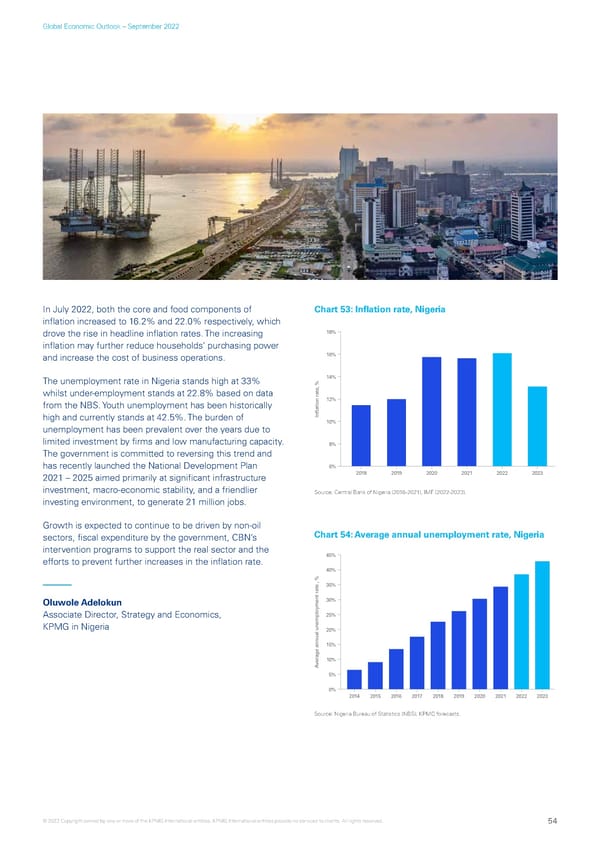Global Economic Outlook – September 2022 In July 2022, both the core and food components of Chart 53: Inflation rate, Nigeria inflation increased to 16.2% and 22.0% respectively, which drove the rise in headline inflation rates. The increasing 18% inflation may further reduce households’ purchasing power and increase the cost of business operations. 16% The unemployment rate in Nigeria stands high at 33% 14% whilst under-employment stands at 22.8% based on data from the NBS. Youth unemployment has been historically 12% high and currently stands at 42.5%. The burden of Inflation rate, % 10% unemployment has been prevalent over the years due to limited investment by firms and low manufacturing capacity. 8% The government is committed to reversing this trend and has recently launched the National Development Plan 6% 2021 – 2025 aimed primarily at significant infrastructure 2018 2019 2020 2021 2022 2023 investment, macro-economic stability, and a friendlier Source: Central Bank of Nigeria (2018-2021), IMF (2022-2023). investing environment, to generate 21 million jobs. Growth is expected to continue to be driven by non-oil sectors, fiscal expenditure by the government, CBN’s Chart 54: Average annual unemployment rate, Nigeria intervention programs to support the real sector and the 45% efforts to prevent further increases in the inflation rate. 40% 35% Oluwole Adelokun 30% Associate Director, Strategy and Economics, 25% KPMG in Nigeria 20% 15% verage annual unemployment rate , %10% A 5% 0% 2014 2015 2016 2017 2018 2019 2020 2021 2022 2023 (est.) (est.) Source: Nigeria Bureau of Statistics (NBS); KPMG forecasts. © 2022 Copyright owned by one or more of the KPMG International entities. KPMG International entities provide no services to clients. All rights reserved. 54
 KPMG Global Economic Outlook - H2 2022 report Page 53 Page 55
KPMG Global Economic Outlook - H2 2022 report Page 53 Page 55